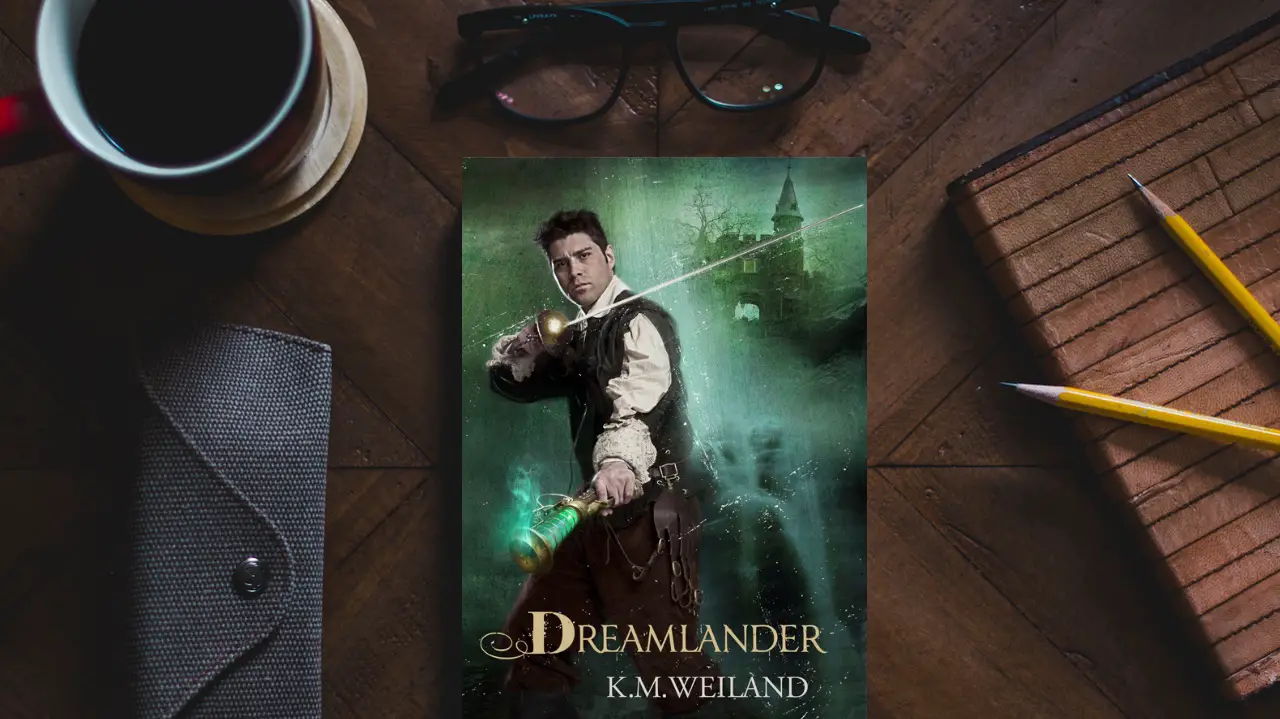What if, in your dreams, you enter into another world? What if the world of dreams was set in a fantasy setting with some splashes of steampunk and a growing schism between two warring nations? What if normally, you and your dreaming self can only remember snatches of the life that you live on the other side? But what if, unlike all the rest of the populace, you were able to fully remember what goes on in both the waking and dreaming worlds?
This is the basic premise of Dreamlander, K.M. Weiland’s third published novel. The protagonist of the story, Chris Redston, has spent the past several years of his life running away from his responsibilities and duties. But when he becomes the Gifted—the only person able to remember both worlds—and inadvertently brings destructive forces into the dream world, he’s going to need to learn to take responsibility and learn how to fight if he’s going to save both worlds from crossing into each other and destroying themselves.
If you’ve followed K.M. Weiland’s blog for writers (which is an excellent blog, by the way) for some time, you’ll know that one of the topics she discusses the most is the importance of theme and character arcs, and that comes through in a big way in this novel. All of the major characters have their own struggles and arcs they undergo, and all of this helps to create a varied and interesting theme overall for the story.
One of the most intriguing elements of the book going into it is arguably the setting. The way the book ends up working, the dream world isn’t much beyond a more-traditional fantasy setting. However, while the setting may be stereotypical in many ways, the inclusion of low-level technology like cable cars and proto-guns keeps the setting different enough to make it interesting, even if much of it is stereotypical fantasy environment. The dream-element of the world also creates some interesting options with the setting overall which Weiland does a good job of working with. There are arguably some rather large inconsistencies with how the dream transitions work within the story. Nevertheless, these inconsistencies are easy to pass over without lessening one’s enjoyment in the book.
Personally, I found the book to be a bit slow going in the first half, but the pacing picked up a lot in the second half and had me turning pages a fair bit. The longer the book goes, the better it gets until we arrive at the ending, which ended up being superbly well-executed. Too many endings are just rather simple victories for the protagonist without much real moral choice required. And without spoiling anything from the ending, what I will say is that the ending of this book involves a far-from-easy choice for the protagonist, the resolution of which turned this book from being an okay story to being a good one.
This story isn’t one of my all-time favorites. But it was a good story that pulled off an excellent climax and epiphany. And for that reason, this is a book that I think is worth recommending.


I’ve heard a lot about this book recently. I may have to look into it. Thanks for the review! 🙂
I’ve heard of this book. I’ll have to read it now. Nice review!
I love this book. Five stars from me.
I read this book a month ago and really enjoyed it!
This sounds really good! I’ll have to read it 🙂
It sounds very similar to Ted Dekker’s Circle Trilogy, which I really enjoyed. I should check this out.
Oh, I love this book! I’m excited about a possible sequel…